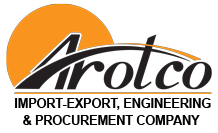RAPIER LOOM (RAPIER WEAVING MACHINES)
Rapier loom machines are machines in which the thread-carrying methods are fixed by means of a warp thread opening, at the end of a rigid rod or in a flexible belt that is positively actuated. The rapier loom may have only one double-sided operating gripper to carry the warp across the entire width, with only one centrally stored warp or two operating grippers on the various sides of the machine.
Rapier looms are manufactured in various types. Their prototype models use a long rapier machine that moves the yarn from side to side along the width of the weaving machine. Another type of this machine has two grippers, each on the other side of the machine. They may be brittle, flexible or telescopic.
A gripper feeds half of the warp through the openings of the warp threads to the arm on the other side, which reaches the other half of the warp in the middle of the path and carries it.
Rapier weaving machines are highly efficient and their speed range varies from 200 to 260 ppm. These machines can produce a variety of fabrics, such as muslin fabrics, curtain fabrics and even sofa fabrics.AP















